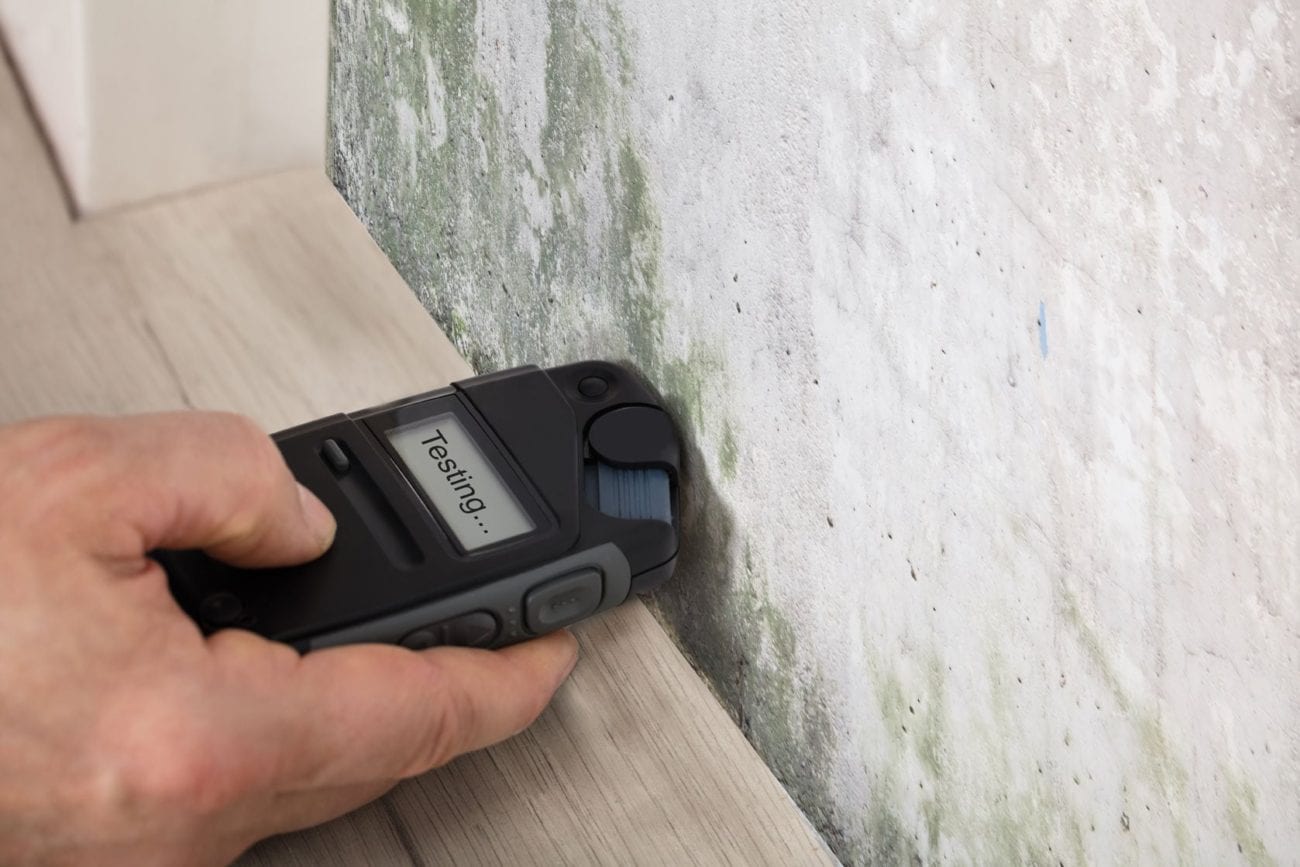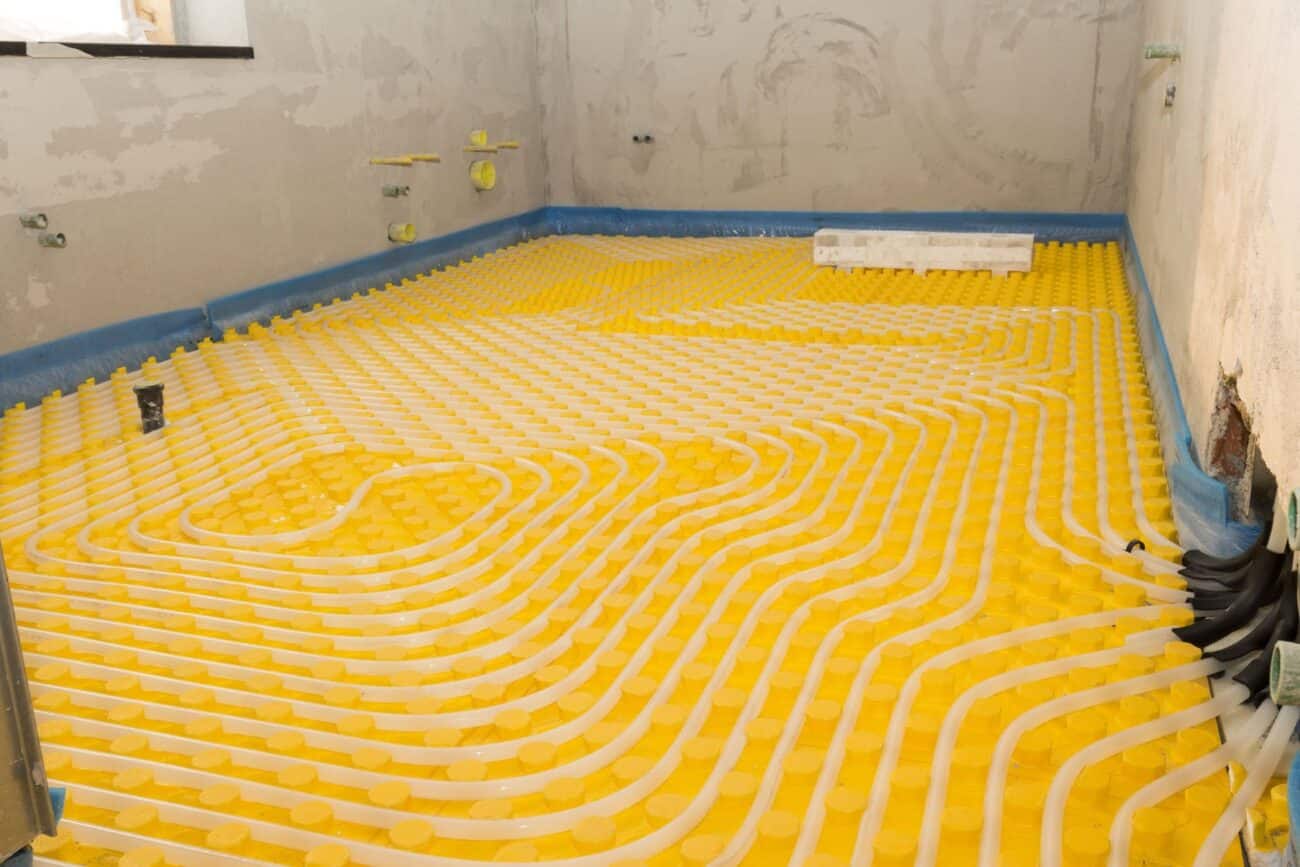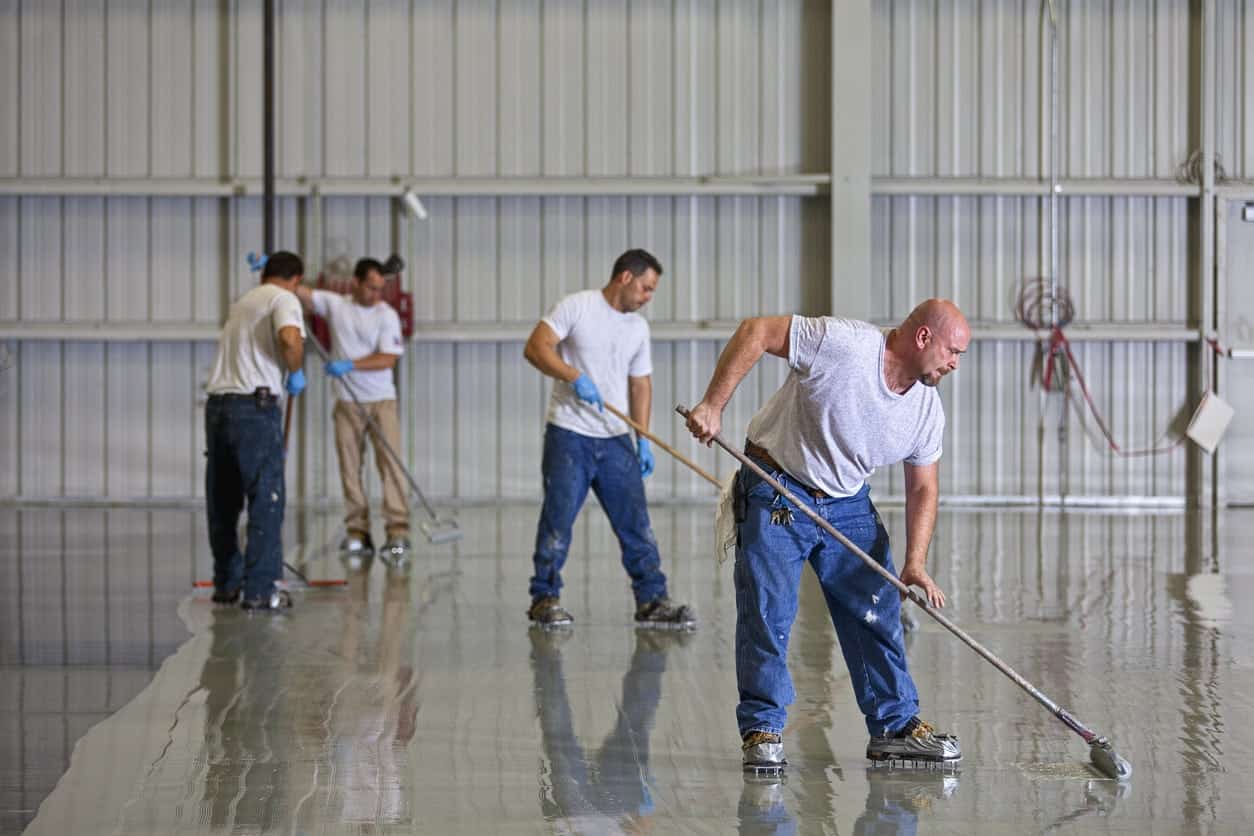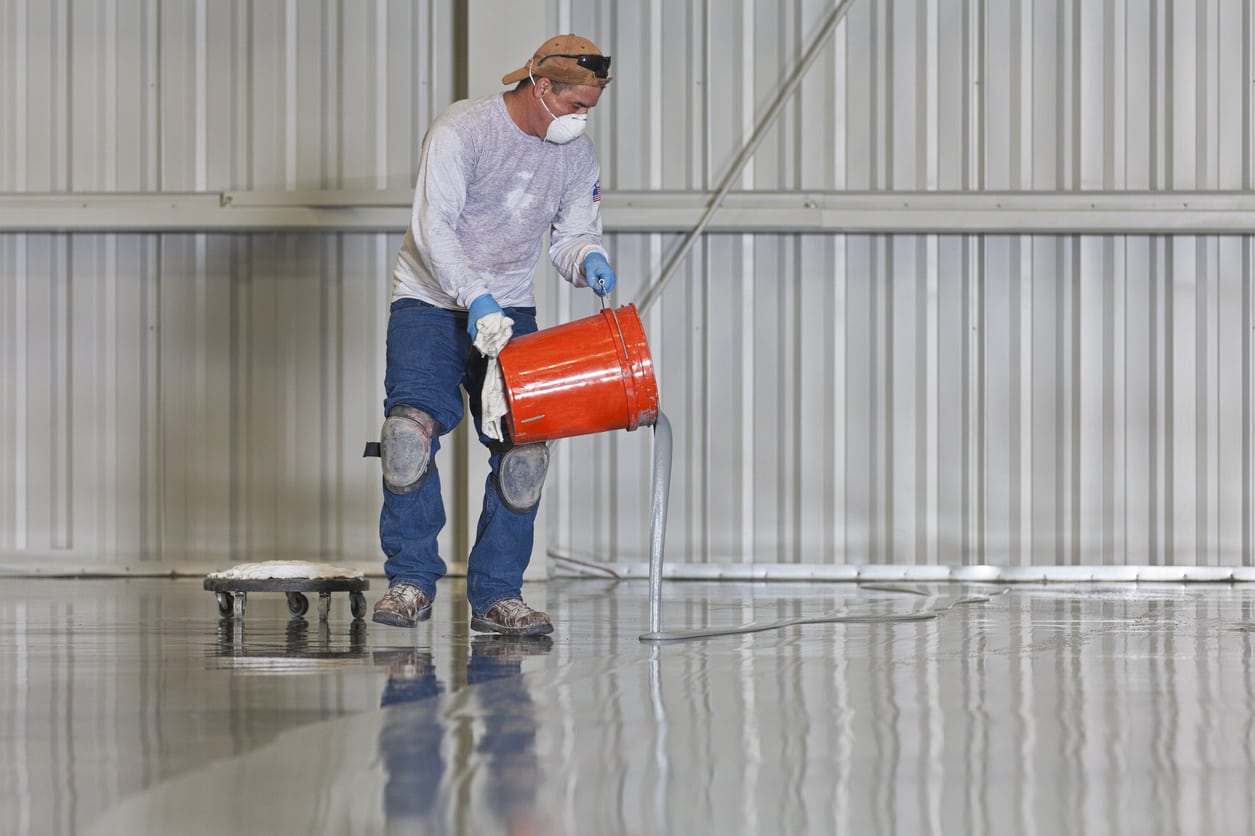Basements are known for water, moisture, mold and mildew problems. Since basement foundations are underground they are usually in close proximity to the water table. This creates a problem since water tends to mitigate towards the walls of the basement; especially during rainy seasons and during springs inevitable snow melting. There are many companies out there that offer basement waterproofing solutions but only a handful that truly live up to their claims. Over the years we have found the best way to prevent basement moisture and water damage is early prevention. By sealing a homes foundation when it is first poured is the best kept secrete when it comes to basement waterproofing.
When looking for a sealer look for a penetrating, waterproofing sealer. Acrylics, epoxies and urethanes will all peel up and will not adhere at the first sign of water. Silicates alone are marketed as waterproofers but do not effectively complete the job. Silicates are known densifiers; however if the sealer is a silicate/siliconate blend you are in luck since the smaller silicate molecule will densify and the larger siliconate molecule will chemically react and waterproof your basement. Silane/Siloxane sealers are excellent choices for basement concrete block and/or cinderblock walls. They are really the only effective solutions for waterproofing basement concrete block and cinderblock walls. And whatever you do, despite their claims, do not use DryLok to waterproof your basement. You will have numerous and countless adhesion problems since DryLok is latex based.
Our Take: Some excellent products on the market include Okon’s S-40, Diamond Hard and Lithi-Tek 9500
While concrete is exceptionally strong, one of the biggest potential threats to undermining that threat can be found in the form of moisture. Somewhat paradoxically, moisture is actually an integral part of concrete from its very beginnings. Concrete is created by mixing together Portland cement, some sort of aggregate, and water. Without water, the concrete would not adhere and bond together so strongly. Furthermore, during the curing process after the concrete is poured, the moisture levels of the concrete have to be kept stable, which often requires a sprinkler to douse the concrete with water constantly.
If concrete requires a certain amount of moisture, why do all of these concrete sealing products claim to prevent the passage of moisture through your concrete? Well, what these products really mean is that they will prevent the passage and entrance of excess moisture through and into your concrete. A certain level of moisture and moisture passage is healthy for a concrete slab – without it, the concrete will likely crack and crumble from excessive dryness. Therefore, a certain level of moisture needs to be in the concrete for it to reach its maximum potential.
This is where the concept of relative humidity comes in. All concrete needs to be kept at a certain stable reading of relative humidity for its strength to be achieved. Relative humidity is simply a measure of the amount of moisture in the slab. Testing for relative humidity is an easy process that involves using special relative humidity probes that you can insert into the concrete. Once within the concrete via a small hole, the probe will measure and record the percentage of moisture (the relative humidity) in your concrete. If the moisture is acceptable, then there are no problems. However, if the level of moisture is too high, you’ll need to take the appropriate steps to lock out that moisture in the future.
With the cost of natural gases and oil rising in many parts of the country, upcoming winters promise to present a difficult choice between heating your home and living somewhat uncomfortably while wearing many layers. However, it doesn’t have to be that black and white of a decision. A newer phenomenon among those home and business owners with concrete floors is radiant floor heating.
Radiant floor heating is a method of heating concrete floors, walls, and other surfaces with tubes running underneath the concrete. Concrete can get very cold, especially in the winter. Anyone who has walked over a bare concrete floor in the winter knows that feeling of iciness that permeates through the soles of your feet to creep through the rest of your body. Radiant floor heating offers an ingenious and cost effective way to heat up those floors while saving you money on your heat, electric, and gas bills.
While it is easier to install a radiant floor heating system before you pour your concrete slabs, it’s not impossible to add to a pre-existing concrete floor. If you haven’t yet poured the concrete, however, the process is as simple as installing a network of small tubes designed to carry either hot water or electrical current under your floors, which leads to them heating up and spreading that heat (or having that heat radiate, which is where the name comes from) throughout the rest of the concrete slab.
If you have a pre-existing concrete floor to which you want to add a radiant floor system, you simply have to add thin electrical current system mats under another layer of cement or gypsum overlay. Okay, maybe that isn’t so simple, but it certainly isn’t impossible. This method will add a radiant floor heating system to your home without significantly raising the height of your concrete floors.
Whichever route you go, a radiant floor heating system is a great, cost effective way to heat otherwise freezing concrete floors and walls throughout the colder months. It is not even necessarily just a fix for those living in places with harsh winters. Concrete is, by nature, a cold material, even in the summer or in warmer climates. If you or members of your family are sensitive to cold, it would be a good idea to look into radiant floor heating systems as a potential fix.
The Concrete Sealer X-2 product manufactured and distributed by Stone Technologies is a high quality concrete sealer. It is a water-based sodium silicate sealer that features a low volatile organic content that is compliant with most strict state regulations (though be sure to check the requirements for your particular state before purchasing any product). The Concrete Sealer X-2 is an environmentally friendly and well reviewed product that offers a solid level of protection.
The only problem with the Concrete Sealer X-2 comes with its marketing on the website. On the site, the Concrete Sealer X-2 is purported to be an excellent concrete sealer for those looking to seal exceptionally porous materials like brick and concrete block. However, sodium silicates are penetrating sealers that do not work on extremely porous materials. Their small particles are meant to penetrate the equally small surface pores on traditional slabs of concrete. If a sodium silicate sealer were to be applied to a porous concrete, as is advised on the website, the solution would simply leak right through the concrete without chemically reacting (which is where the sodium silicate features most of its strength and protection).
The Concrete Sealer X-2 is a great concrete sealing product for any projects requiring a strong penetrating solution; however, it is not the best choice for more porous concrete.
Aliphatic urethanes are similar to epoxy sealers. They are both surface level concrete sealers that feature large particles of sealant that, rather than penetrate past the tiny surface pores natural to all concrete, will remain on the surface of the concrete to be spread out evenly during the application process. Once so spread out, the aliphatic urethane (like the epoxy sealer) will feature a strong adhesive bond to the concrete substrate, protecting the concrete underneath from abrasion, heat, water, chemical spills, and similar threats.
However, aliphatic urethanes are significantly stronger than epoxies, featuring a greater level of resistance to the aforementioned threats. This makes aliphatic urethanes the preferred choice for industrial warehouses that feature heavy machinery and frequent chemical spills, as well as airports and large retail stores that have heavy foot traffic and frequent spills. Aliphatic urethanes and epoxy concrete sealers do not actually have to be mutually exclusive products, either. In fact, many people frequently choose to apply an epoxy base layer to the concrete substrate before adding a layer of aliphatic urethane over that epoxy layer. The aliphatic urethane will actually bond just as well to the pre-existing epoxy as it will to the concrete itself, making it the perfect choice for a topcoat.
Of course, aliphatic urethanes are not the perfect choice for every type of concrete project. Sometimes you will need a penetrating sealer, like a concrete densifier, to achieve the desired results. Concrete densifiers are different from aliphatic urethanes primarily because they feature small particles of sealant that will penetrate past the surface pores natural to all concrete, passing through the extensive network of microscopic pores and hairline cracks to react chemically within the concrete. These chemical reactions actually enhance the very nature of the concrete, greatly increasing its strength, longevity, and structural integrity.
Concrete densifiers are preferred to aliphatic urethanes for smaller projects, such as for homes or buildings, rather than large retail stores, airports, or warehouses. They are often waterproofers (if you find a silicate/siliconate variety), and some even create vapor barriers that make them the most effective type of concrete sealer against potential water damage. They feature many of the same benefits as aliphatic urethanes, though they are not as strong and will not withstand as harsh of conditions.
Our Take: Some excellent aliphatic urethane choices we recommend are Superior Industries Aliphatic Urethane or Urethane 645. As far as concrete densifiers we recommend Lion Hard, Lithi-Tek 4500 and Formula One
Garage floors are one of the most high traffic areas of most homes. Not only do they feature the constant foot traffic of those entering and leaving the house, they also need to withstand the weight and abrasion of tires, as well as the chemical spills from oil and other acidic materials. This is not to mention the harm of the freeze/thaw cycle if water gets into the concrete, in addition to the oversaturation of sodium if you track road salts into your garage. In short, they require a significant level of strength and protection, or else they will likely crack and degrade, leading to costly repairs.
There are two main solutions to this problem, and they both involve treating the concrete with a high quality concrete sealer. The first is to use an epoxy sealer. Epoxies are surface level sealers whose large particles of chemical sealant cannot penetrate past the tiny surface pores natural to all concrete. The epoxy will pool of the surface of the concrete to be spread out evenly during the application process. As a result of this process, the epoxy will bond to the surface of the concrete substrate, leading to comprehensive protection from heat, water, chemical spills, abrasions, and so on. Epoxies are an excellent choice, especially if you want to add some visual appeal in the form of paint chips or decorative quartz to your concrete.
Epoxies, however, will change the surface texture of your concrete from that of natural concrete to a smoother surface, similar to what you would find in an airport or large retail store. If you happen to prefer a natural concrete garage floor, you should choose the second main solution, concrete densifiers. Concrete densifiers are also necessary if you want to polish your garage floor – be sure to apply one before the polishing or grinding process begins, as that would be too late, leading to widespread crumbling.
Concrete densifiers work by penetrating past the surface of the concrete to chemically react with the naturally occurring minerals and compounds to create more calcium silicate hydrate, or CSH, which is the compound that gives concrete its noted strength. Concrete densifiers come in two main varieties: sodium-based and lithium-based. For garage floors, we always recommend lithium-based concrete densifiers, as they are better when your car tracks in salt from the roads. Sodium-based concrete densifiers will lead to an oversaturation of sodium in your concrete, while the lithium concrete densifiers will help retain the balance of salts and chemicals necessary to preserve strength and longevity.






